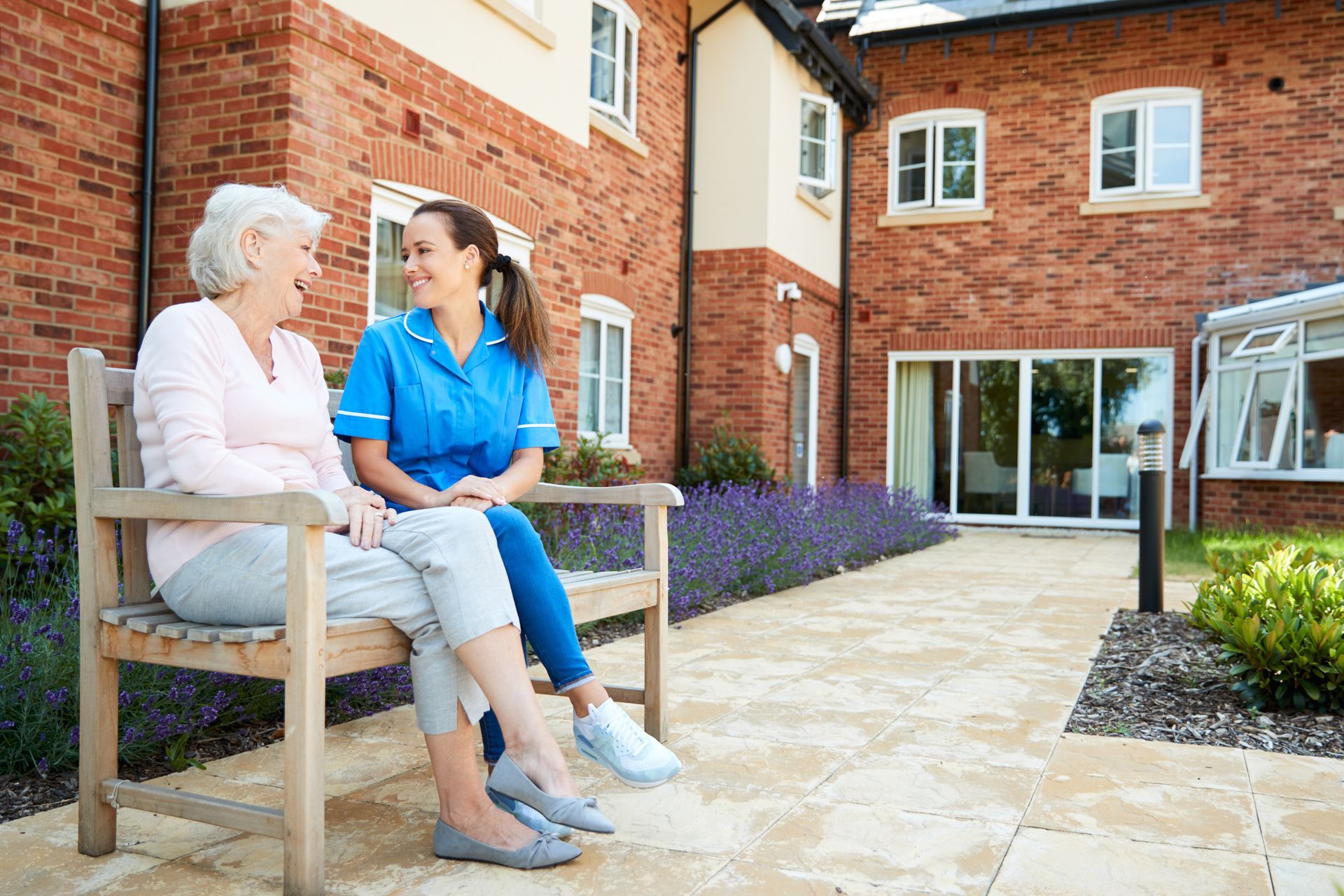BLOG
Innovative Security Measures to Protect Residents and Caregivers
Ensuring caregiver and resident safety is a non-negotiable in assisted living. With technological advancements, new and innovative security solutions are now being implemented to address these safety concerns more effectively. Continue reading as we discuss the latest technologies and practices that maximize protection in
assisted living. From digital surveillance systems to wearable devices for health monitoring, we will explore how these innovations enhance safety for everyone living and working in care settings.
The Evolution of Security in Care Settings
There's nothing more important than staff and residential security in care settings. Whether you need support with elderly relatives or loved ones with dementia or brain injuries, a secure environment is important for everyone involved. While assisted living security systems have always been a priority, they have significantly evolved from basic measures to smart solutions, adapting to technological advancements and changing threats. Traditionally, care facilities relied on physical locks, keys, and simple alarm systems to secure premises and ensure the safety of its residents. While these measures were somewhat effective, they offered limited flexibility, lacking the capability for complex security challenges, such as unauthorized access or the need for immediate emergency response.
Thanks to the rise of digital technology, security measures have undergone an enormous shift. Modern care settings now incorporate advanced surveillance systems, access control technologies using biometrics, and networked devices that enable real-time monitoring and rapid response to incidents. Integrating technology into safety protocols provides comprehensive protection and peace of mind.
Innovative Security Solutions for Resident Safety
These days, it's easy to enhance resident safety within care settings thanks to technology offering more efficient and responsive solutions. An example of advanced technology is IP security cameras, a significant upgrade from traditional CCTV systems. Equipped with AI, these cameras can recognize unusual activities or unauthorized individuals, providing high-definition imagery that can be accessed remotely. These improvements allow for real-time monitoring and instant alerts to staff, addressing any potential security breaches promptly.
Wearable technology for residents is another key innovation, providing both health monitoring and location tracking. These devices can detect falls, monitor vital signs, and alert caregivers to potential health issues, while also enabling precise location tracking within the facility. Using wearable tech provides peace of mind to residents, their families, and caregivers who can have more confidence in their roles.
Smart access controls have also transformed security in care settings, moving away from traditional keys to keyless entry systems that leverage biometrics or mobile credentials. This not only prevents unauthorized access in a vulnerable setting but also creates an audit trail of who enters and exits, enhancing overall security.
Integrating IP security cameras, wearable tech, and smart access controls in care facilities is a comprehensive security strategy for full protection against external and internal threats, ensuring that safety and well-being are always prioritized.
Personal Safety Devices, Apps and AI
Protecting caregivers at work is crucial for the safety of residents and overall care home operations. One way to support caregivers is through personal safety devices, which alert security officers in emergencies, ensuring immediate assistance. Discreet, wearable, and often equipped with GPS tracking for precise location identification, these devices are a game-changer for those working with vulnerable people.
Additionally, mobile apps designed for caregiver safety have become indispensable. These apps contain life saving features like panic buttons, check-in/out systems for home visits, and the ability to share location details with trusted contacts or a central monitoring center. Utilizing these tools is essential for caregivers working in remote areas or managing home visits.
Artificial intelligence plays a significant role, too. Thanks to AI-driven analytics, caregivers can predict and prevent potential security threats. By analyzing patterns and identifying anomalies in behavior or environment, these systems can preemptively alert caregivers to potential risks, allowing them to take proactive measures. Together, these innovative solutions empower caregivers with tools to stay safe while performing their vital roles.
Privacy and Ethical Concerns
Whenever a care facility implements innovative security solutions it must balance safety with privacy to ensure it aligns with ethical and privacy rights. There is a fine line between enhancing security and respecting the privacy rights of residents and caregivers, so ensuring consent and transparency in the use of surveillance technologies and data collection is paramount.
This means all parties should be informed about what data is being collected, how it is being used, and who has access to it. Adopting a minimal intrusion approach, where security measures are effective without being overly invasive, is critical. Privacy policies and practices must be clearly communicated, and consent should be obtained, to ensure security enhancements in care settings do not infringe upon individual rights or dignity.
Secure, Customized Care for Yourself or a Loved One
Innovative security solutions are vital for ensuring the safety and well-being of residents and caregivers in care settings. Using these technologies, facilities, and assisted living can provide a secure environment that fosters trust, peace, and reliability. Explore our professional
assisted living services and
contact us to see how we can provide resident safety with cutting-edge solutions.















